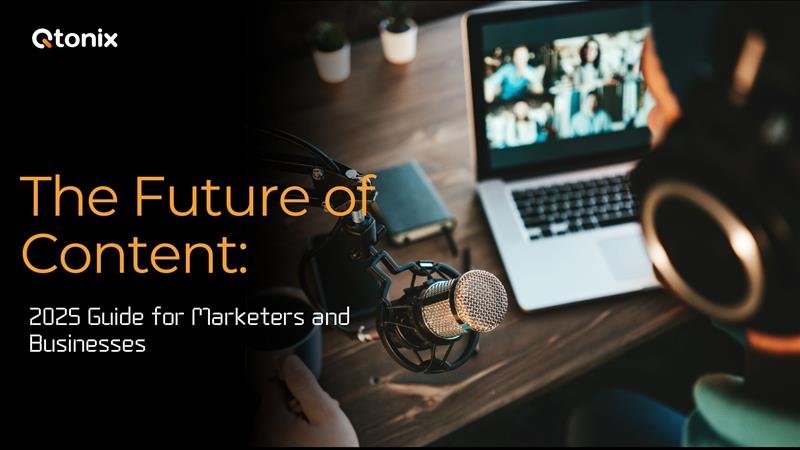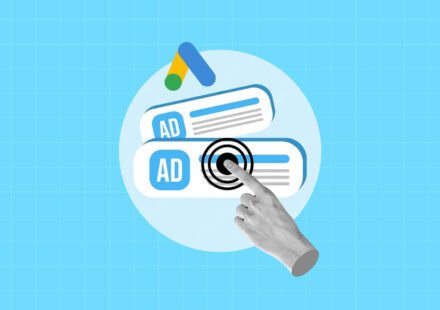The Future of Content: 2025 Guide for Marketers and Businesses

Content marketing is a great way to help people become aware of your brand. The word “Content” could be anything. It can be a video or a blog post.
Since many customers research before buying a product or service, there’s a good chance they’ll come across your content during their decision-making process.
When your content provides real value, potential customers are more inclined to trust your brand and choose your products or services when the time comes to buy.
The effectiveness of content marketing strategies may vary…
You have to know what converts a piece of content, what solutions your customers are seeking, what platforms they are using, and how to optimize for platform algorithms to stay visible.
In this blog, we will discuss how to implement a content marketing strategy and what the future of content creation is.
Let’s get started.
Key Takeaways
- 58.5% of US search traffic on Google is “zero-click” searches. This makes it crucial for brands to secure visibility in zero-click results such as featured snippets.
- AI continues to be a trend in 2025, with its use expanding beyond content creation. Marketers increasingly rely on it to streamline workflows and extract insights from data.
- Search everywhere optimization will take center stage, requiring brands to consider how audiences find their content across a variety of platforms.
- E-E-A-T and short videos may continue to be top-notch content marketing trends for 2025.
Understanding Content Marketing
Content marketing is a type of inbound marketing. Its strategy draws in users to your brand through either useful or entertaining content – typically text, audio, or video format.
Content marketing offers value to companies because it allows businesses to build trust and foster lasting relationships with both potential and existing customers on a larger scale.
This makes it simpler to sell your products quickly.
It can be difficult to measure the ROI of content as it is often just one part of the journey for the customer. Still, brands with a great content marketing approach tend to have lower customer acquisition costs and longer-term compounding returns.
Simple Steps to Implement Content Marketing Strategy
1. Define Your Goals:
Decide what you want your content to achieve. It can be either brand awareness, lead generation, customer retention, or sales growth. Clear goals keep your strategy focused.
2. Understand Your Audience
Create buyer personas by researching who your ideal customers are, what problems they face, where they spend time online, and how they consume content.
3. Conduct a Content Audit
Review your existing content (blogs, videos, social posts, etc.) to identify what’s working, what needs improvement, and where gaps exist.
4. Choose Content Types & Channels
Decide which formats (blogs, videos, podcasts, infographics, etc.) best suit your audience and which platforms (website, LinkedIn, Instagram, YouTube, etc.) to prioritize.
5. Develop a Content Plan & Calendar
Outline topics, publishing frequency, and distribution schedules. A calendar helps maintain consistency and organization.
6. Create High-Quality Content
Produce valuable, engaging, and optimized content that solves your audience’s problems and aligns with your brand’s voice.
7. Distribute & Promote Content
Share your content across chosen platforms, repurpose it for multiple channels, and use SEO, email, or paid ads to maximize reach.
8. Measure & Analyze Performance
Track metrics like traffic, engagement, conversions, and ROI. Use insights to refine your strategy for better results.
The Future of Content Marketing
Here is a table that shows major trends shaping content marketing in 2025 and practical next steps you can apply today.
| Trends | What It Means | Impact on Brands | Opportunities |
| AI-Powered Content | AI tools assist in ideation, personalization, and automation. | Faster production but risk of generic content. | Use AI for data analysis, personalization, and workflow efficiency while keeping human creativity intact. |
| Search Everywhere Optimization | Audiences discover content beyond Google—on TikTok, YouTube, LinkedIn, podcasts, and voice search. | SEO is no longer limited to Google rankings. | Optimize for multiple platforms with platform-specific strategies. |
| Zero-Click Content | Users get answers directly on search engines without clicking. | Reduced website traffic from SERPs. | Focus on brand visibility, featured snippets, and building authority. |
| Personalized Experiences | Content tailored to user behavior, intent, and preferences. | Increases engagement and loyalty. | Use data-driven insights to deliver the right content to the right audience. |
| Interactive & Immersive Content | Growth of AR/VR, polls, quizzes, and interactive videos. | Higher engagement and dwell time. | Create experiential content that educates and entertains. |
| Short-Form Video Dominance | TikTok, Reels, and Shorts drive quick engagement. | Attention spans shrink further. | Repurpose long-form content into snackable video formats. |
| Community-Driven Marketing | Audiences trust peer recommendations and niche communities. | User-generated content and communities become powerful. | Build brand communities and encourage UGC (user-generated content). |
Conclusion
Content marketing in 2025 is no longer about publishing more—it’s about publishing smarter. With AI reshaping creation, search engines moving toward generative answers, and short-form video dominating consumer attention, brands must adapt quickly to stay relevant. At the same time, trust, authenticity, and human creativity remain the ultimate differentiators.
If you start today, auditing your strategy, investing in the right tools, and aligning content with audience intent, you’ll not only keep pace with the future of content marketing but also shape it.
FAQs
The most significant shift is the rise of AI-assisted content creation and distribution. AI now powers ideation, personalization, and repurposing, while humans provide authenticity, creativity, and oversight.
Both matter. Short-form video dominates discovery and engagement, while blogs, case studies, and guides still drive authority, SEO, and conversions. The key is integrating formats so they support one another.
By leaning on first-party data, contextual signals, and user-consented preferences. Instead of relying on third-party cookies, brands build direct relationships with audiences through newsletters, communities, and apps.
No. AI helps scale and streamline production, but human creativity, emotional intelligence, and brand storytelling are irreplaceable. The winning approach is a hybrid: AI for speed and scale, humans for trust and connection.
Written by Adam Gibbs
Adam is a skilled SEO content expert with a proven track record of crafting high-quality, keyword-rich content that drives traffic, engages readers, and ranks on search engines. With 10+ years of experience in digital marketing and content strategy, Adam specializes in creating blog posts, website copy, and marketing materials tailored to both audience needs and SEO best practices.
Related Posts
- All Posts
- SEO
Mastercopy Table of Contents Book Intro Call Case Studies Share: Related Guides: Related Posts SEO Beyond Keywords: Why Schema Markups...
Mastercopy Table of Contents Book Intro Call Case Studies Share: Related Guides: Related Posts SEO Beyond Keywords: Why Schema Markups...

Mastercopy Table of Contents Book Intro Call Case Studies Share: Related Guides: Related Posts SEO Beyond Keywords: Why Schema Markups...
Mastercopy Table of Contents Book Intro Call Case Studies Share: Related Guides: Related Posts SEO Beyond Keywords: Why Schema Markups...


